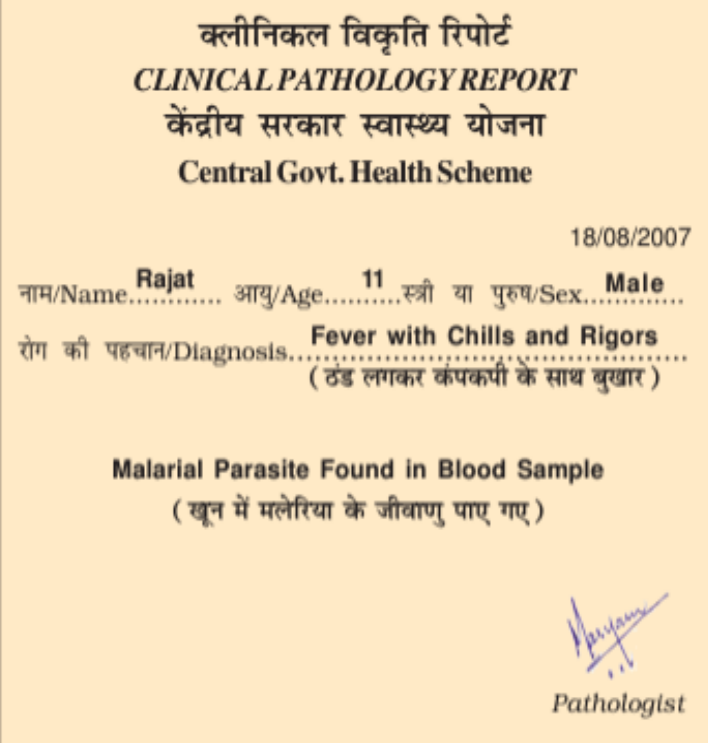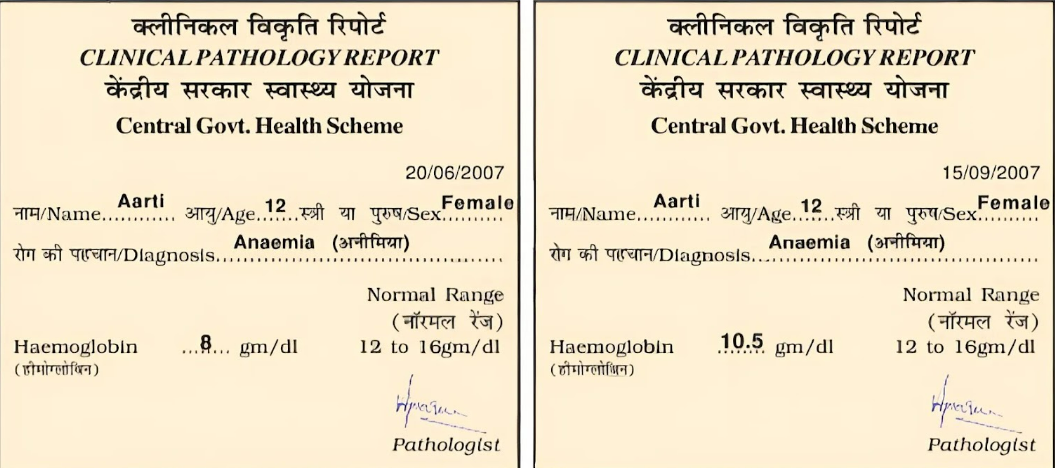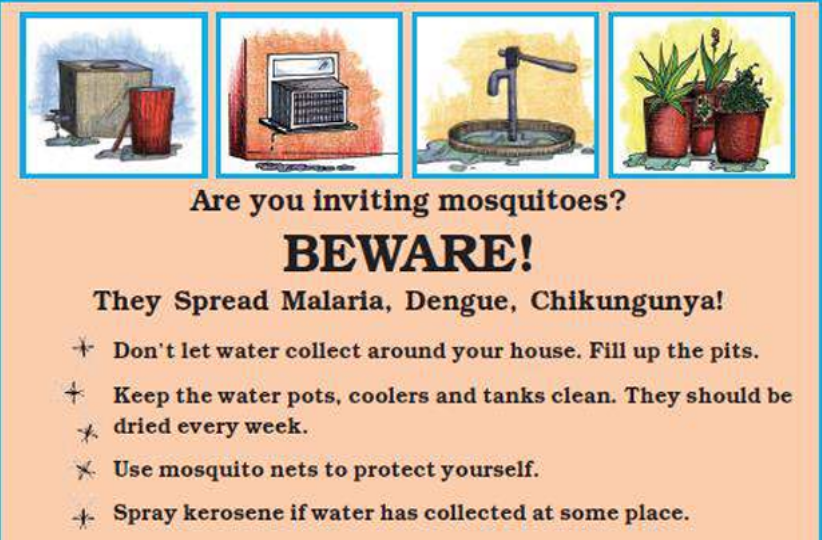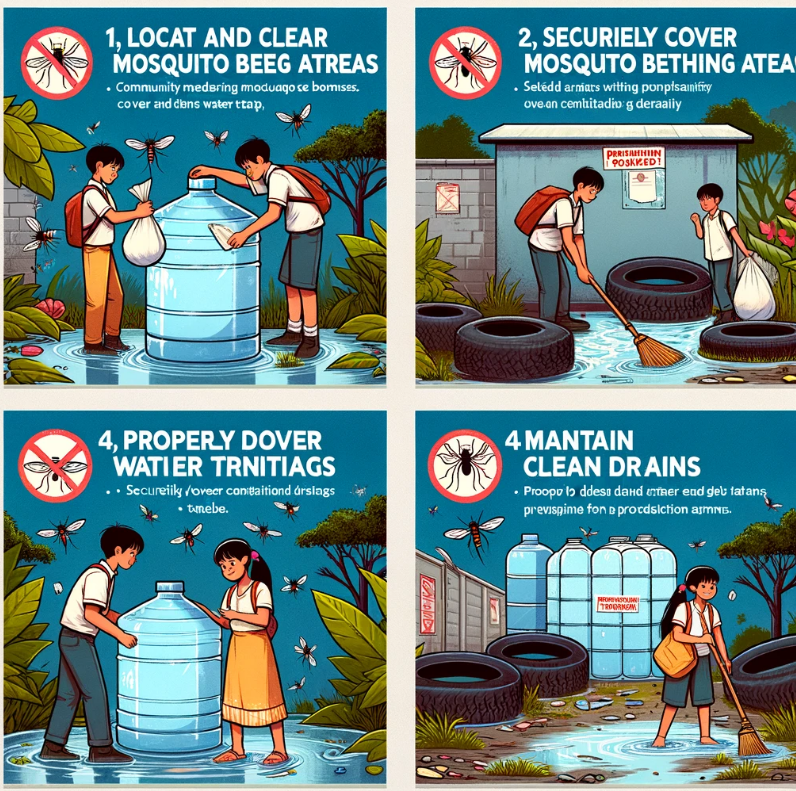

NCERT Solutions for Class 5 EVS Chapter 8: "A Treat for Mosquitoes" introduces students to an intriguing aspect of environmental science, focusing on mosquitoes and their role in nature. This chapter offers young learners a closer look at the life cycle of mosquitoes and their impact on the ecosystem, aiming to build a basic understanding of entomology.
To master the concepts and insights shared in this chapter, students can turn to the NCERT solutions crafted by educational specialists. Excelling in the final exams is a priority for students, and working through the exercises in the NCERT Class 5 EVS textbook is key to success. Nevertheless, some exercises might pose challenges to students. To support them, NCERT Solutions for Class 5 EVS Chapter 8, designed to the CBSE syllabus and prepared by our seasoned educators, are available to clear up any confusion.NCERT Solutions for Class 5 EVS Chapter 8 Overview
In Chapter 8 of the Class 5 EVS textbook, titled "A Treat for Mosquitoes," kids explore the fascinating world of mosquitoes and their lifecycle. This chapter is filled with interesting facts and information that helps kids understand the role of mosquitoes in the ecosystem. For students aiming for top grades and looking for a bit of additional support with this chapter, the Curious Jr team has created a special guide. If kids stumble upon some challenging exercises, there's no need to worry! The Curious Jr guide for Chapter 8 is curated to assist them, in adhering to their educational requirements. This guide helps clarify any doubts, ensuring students grasp the concept of mosquitoes and their environmental significance.Related Links -
NCERT Solutions for Class 5 EVS Chapter 8 A Treat for Mosquitoes
NCERT Solutions for Class 5 EVS Chapter 8 "A Treat for Mosquitoes" provide clear and thorough answers to all the questions in this chapter. These solutions are crafted to help Class 5 students learn about mosquitoes, their lifecycle, and their impact on the environment as discussed in the chapter. It aids students in enhancing their knowledge about public health and the natural world. These solutions are concise and focused on helping students effortlessly complete their homework and prepare efficiently for their exams. All the solutions to the questions in the NCERT Class 5 EVS textbook for Chapter 8 are available here for free. Next, we will explore the solutions for "A Treat for Mosquitoes."NCERT Solutions for Class 5 EVS Chapter 8
Q1. Do you know anyone who has had malaria? Answer: Yes, a friend of mine suffered malaria. He got really high fevers, felt very weak, and had to rest until they got better with the help of medicines . Q2. How did they find out that they had malaria? Answer: Diagnosis was confirmed through specific blood tests for malaria. Q3. What problems did they have on having malaria? Answer: When someone had malaria, they felt really sick. They got high fevers, chills, and felt very weak. They also had headaches and sometimes found it hard to eat because they felt like throwing up. It made them need to rest a lot. Q4. What other diseases can be caused by mosquito bites? Answer: Mosquito bites can cause diseases like dengue, chikungunya, Yellow fever, and Zika virus. These can make you feel very sick with fever, body pain, and sometimes rashes. Q5. In which season is malaria more common? Why do you think this happens? Answer: Malaria is more common in the rainy season. This happens because mosquitoes, which spread malaria, breed more in stagnant water. During the rainy season, there are more places for water to collect and stand still, like puddles and open containers, which become perfect spots for mosquitoes to lay their eggs. Q6. What do you do in your house to protect yourself from mosquitoes? Also, find out from your friends about what they do. Answer: In our house, we use mosquito repellent and sleep under mosquito nets to stay safe from bites. My friends do the same, and some also use mosquito coils and keep their surroundings clean to prevent mosquitoes from breeding. Q7. Look at the report of the blood test given here. Which words in the report help us to know that the person has malaria? Answer:
The detection of malaria parasites in the blood signals the presence of the disease.
Answer:
The detection of malaria parasites in the blood signals the presence of the disease.
Tell
 Q1. Look at Aarti’s blood report and find out the minimum required haemoglobin.
Answer:
Aarti's report indicates a minimum haemoglobin requirement of 12 gm/dl.
Q2. How much did Aarti’s haemoglobin go up and how long did it take for that?
Answer:
Aarti's haemoglobin rose by 2.5 gm/dl over a span of three months.
Q3. What does the newspaper report say about the problems caused by anaemia?
Answer:
The report highlights anaemia’s impact on both mental and physical growth.
It says that anaemia can make people feel very tired and weak because their blood doesn't have enough red cells to carry oxygen to their body parts. It mentions that anaemia is a big problem, especially for women and children, making it hard for them to do their daily activities and sometimes causing serious health issues if not treated.
Q4. Have you or anyone in your family ever needed to get a blood test? When and why?
Answer:
Yes, my mother have had to get blood tests when she felt very sick last month. Her blood test report confirmed that she was suffering from malaria.
Q6. Have you had a health checkup at your school? What did the doctor tell you?
Answer:
A recent school health checkup confirmed my good health.
Q1. Look at Aarti’s blood report and find out the minimum required haemoglobin.
Answer:
Aarti's report indicates a minimum haemoglobin requirement of 12 gm/dl.
Q2. How much did Aarti’s haemoglobin go up and how long did it take for that?
Answer:
Aarti's haemoglobin rose by 2.5 gm/dl over a span of three months.
Q3. What does the newspaper report say about the problems caused by anaemia?
Answer:
The report highlights anaemia’s impact on both mental and physical growth.
It says that anaemia can make people feel very tired and weak because their blood doesn't have enough red cells to carry oxygen to their body parts. It mentions that anaemia is a big problem, especially for women and children, making it hard for them to do their daily activities and sometimes causing serious health issues if not treated.
Q4. Have you or anyone in your family ever needed to get a blood test? When and why?
Answer:
Yes, my mother have had to get blood tests when she felt very sick last month. Her blood test report confirmed that she was suffering from malaria.
Q6. Have you had a health checkup at your school? What did the doctor tell you?
Answer:
A recent school health checkup confirmed my good health.
Find out
Q1. Ask a doctor or elders about the food items which contain iron. Answer: Doctors or elders would suggest eating food items rich in iron to prevent or treat anaemia. These foods include- green leafy vegetables like spinach,
- fruits like pomegranate and apples,
- legumes, nuts, and seeds,
- meat and fish.
Find Out and Tell
 Q1. Have you seen any poster like this put up anywhere?
Answer:
Yes, similar educational posters are displayed on school boards.
Q2. Who do you think puts up such posters or gives ads in the newspapers?
Answer:
These informative posters and ads are typically sponsored by government health departments.
Q3. What are some of the important points given in the poster?
Answer:
The poster emphasizes disease prevention, water hygiene, cleanliness, and using nets for mosquito protection.
Q4. Why do you think pictures of a tank cooler and pits are shown in the poster?
Answer:
They illustrate common mosquito breeding sites.
It aims to raise awareness about preventing mosquito breeding by keeping these areas clean and dry. This helps in reducing the spread of mosquito-borne diseases like malaria and dengue.
Q1. Have you seen any poster like this put up anywhere?
Answer:
Yes, similar educational posters are displayed on school boards.
Q2. Who do you think puts up such posters or gives ads in the newspapers?
Answer:
These informative posters and ads are typically sponsored by government health departments.
Q3. What are some of the important points given in the poster?
Answer:
The poster emphasizes disease prevention, water hygiene, cleanliness, and using nets for mosquito protection.
Q4. Why do you think pictures of a tank cooler and pits are shown in the poster?
Answer:
They illustrate common mosquito breeding sites.
It aims to raise awareness about preventing mosquito breeding by keeping these areas clean and dry. This helps in reducing the spread of mosquito-borne diseases like malaria and dengue.
Think
Q1. Why do you think it talks about putting fish in the tank? What do you think the fish eats? Answer: It is because some types of fish eat mosquito larvae, which helps control the mosquito population. By eating the larvae, the fish prevent mosquitoes from growing up and spreading diseases. It's a natural way to keep the mosquito numbers down without using chemicals. Q2. What will happen when oil is spread on the water? Answer: Oil forms a barrier on water, suffocating and killing mosquito larvae.Find Out
Q1. Which diseases are spread by flies and how? Answer: Flies can be vectors for numerous diseases through their ability to carry pathogens from their bodies and excretions. They are known to spread illnesses such as amoebic dysentery, typhoid fever, cholera, Trachoma, and various parasitic infections like those caused by tapeworms and roundworms, as well as leprosy and fungal diseases (mycoses).Mosquito Check
Q1. Divide your class into two or three groups. Each group will go around to check one area in the school or around it.- Pot
- Cooler
- Tank
- any open space in the school
- ground
- Gutter
- any other place_________.
Answer:
- Pot
- Cooler
- Tank
- any open space in the school ground
- Gutter
- any other place:
- Drainage
Make a Poster
Q1. In your group, make a poster with a message to keep the cooler tank, drains, and the area clean (wherever water collects). Put up your poster in and around your school. Answer:
This creative task encourages students to engage with public health messaging, using art to communicate the importance of cleanliness and mosquito prevention strategies effectively.
Q2. Find out who is responsible for keeping the area around your school clean. Write a letter from your class, reporting your findings and suggestions. Find out to whom the letter should be written and to which office it should be sent.
Answer:
Students are guided to explore civic responsibility, identifying and communicating with local authorities (like the municipal corporation) to advocate for environmental cleanliness and health safety.
To,
The Honorable Mayor,
Municipal Corporation of Bangalore,
Karnataka.
Subject: Appeal for Enhanced Cleanliness and Mosquito Control near Vidyaniketan School Premises.
Respected Sir/Madam,
As students of Vidyaniketan School located in Bangalore, we are compelled to draw your attention to the concerning levels of uncleanliness and litter accumulating in the vicinity of our school. This situation has escalated into a breeding ground for mosquitoes, raising alarm over the potential spread of mosquito-borne illnesses among students and residents alike. The recent spells of rainfall have only worsened the condition, leading to water stagnation.
We urge your esteemed office to promptly address this critical health hazard by initiating comprehensive cleaning and mosquito control measures. Such actions would greatly contribute to safeguarding our community's health and ensuring a cleaner, safer environment for all.
We appreciate your attention to this urgent matter and look forward to seeing positive changes in our surroundings.
Thank you for your consideration and action.
Yours sincerely,
Students of Class V,
Vidyaniketan School,
Bangalore.
Answer:
This creative task encourages students to engage with public health messaging, using art to communicate the importance of cleanliness and mosquito prevention strategies effectively.
Q2. Find out who is responsible for keeping the area around your school clean. Write a letter from your class, reporting your findings and suggestions. Find out to whom the letter should be written and to which office it should be sent.
Answer:
Students are guided to explore civic responsibility, identifying and communicating with local authorities (like the municipal corporation) to advocate for environmental cleanliness and health safety.
To,
The Honorable Mayor,
Municipal Corporation of Bangalore,
Karnataka.
Subject: Appeal for Enhanced Cleanliness and Mosquito Control near Vidyaniketan School Premises.
Respected Sir/Madam,
As students of Vidyaniketan School located in Bangalore, we are compelled to draw your attention to the concerning levels of uncleanliness and litter accumulating in the vicinity of our school. This situation has escalated into a breeding ground for mosquitoes, raising alarm over the potential spread of mosquito-borne illnesses among students and residents alike. The recent spells of rainfall have only worsened the condition, leading to water stagnation.
We urge your esteemed office to promptly address this critical health hazard by initiating comprehensive cleaning and mosquito control measures. Such actions would greatly contribute to safeguarding our community's health and ensuring a cleaner, safer environment for all.
We appreciate your attention to this urgent matter and look forward to seeing positive changes in our surroundings.
Thank you for your consideration and action.
Yours sincerely,
Students of Class V,
Vidyaniketan School,
Bangalore.
Tell
Is there a pond or river around your house or school? Go and look around and observe these things: Q1. Can you see algae in or around the water? Answer: Yes, we can see reen or sometimes brownish patches floating on the water or clinging to rocks and plants near the edges, that's algae. Q2. Where else have you seen algae? Answer: Algae can be found in many places, including aquariums, garden ponds, neglected swimming pools, and damp walls where sunlight and moisture are present Q3. Are there plants growing on the side or in the water? Find out their names. Answer: Yes, plants are growing on the side or in the water. These include plants such as water lilies, pondweed, reeds, and cattails. Q4. Do you think these were planted by someone or did they grow on their own?
Answer:
Many plants in and around water bodies grow naturally, thriving in their ideal wet environment. However, some may have been planted by people to enhance the area's beauty or support local wildlife.
Q5. What else can you see in the water? Make a list
.
Answer:
When observing a water body, you might see:
Q4. Do you think these were planted by someone or did they grow on their own?
Answer:
Many plants in and around water bodies grow naturally, thriving in their ideal wet environment. However, some may have been planted by people to enhance the area's beauty or support local wildlife.
Q5. What else can you see in the water? Make a list
.
Answer:
When observing a water body, you might see:
- Fish swimming around
- Frogs or tadpoles near the edges
- Insects like water striders on the surface
- Snails or aquatic insects under rocks
- Birds near the water's edge looking for food
- Small water creatures like dragonfly larvae
What we have learnt
Q1. What can you do so that mosquitoes do not breed in your house, school, and neighborhood? Answer: To prevent mosquitoes from breeding, you can:- Empty and clean any containers holding water like buckets, flowerpots, and bird baths regularly.
- Cover water storage containers to prevent mosquitoes from laying eggs.
- Ensure drains and gutters are clear to avoid water stagnation.
- Use mosquito nets and screens on windows and doors.
- Plant mosquito-repelling plants like citronella, lavender, and marigold around your house and school.
Importance of NCERT Solutions for Class 5 EVS Chapter 8
The NCERT solutions for Class 5 EVS Chapter 8, "A Treat for Mosquitoes," serve as an invaluable learning tool for young students fascinated by the roles mosquitoes play in the environment. These expertly developed solutions walk students through the life cycle of mosquitoes, explaining each stage in an easy-to-understand manner and shedding light on the significance of mosquitoes in various ecosystems. By studying these solutions, students deepen their understanding of important environmental science concepts, learn about the diseases mosquitoes can spread, and explore methods of mosquito control and prevention. This knowledge is crucial for recognizing the complex interactions within ecosystems and the impact of mosquitoes on human health and the environment.Benefits of NCERT Solutions for Class 5 EVS Chapter 8
NCERT Solutions for Class 5 EVS Chapter 8, "A Treat for Mosquitoes," provides students with an in-depth exploration of the role mosquitoes play in the environment, offering a comprehensive resource for expanding their understanding of biology and environmental health. The advantages of utilizing these solutions include:- In-depth Knowledge of Mosquitoes: This chapter guides students through the fascinating lifecycle of mosquitoes, their habitats, and the impact they have on ecosystems and human health. NCERT Solutions deliver detailed explanations and insights, helping students fully understand these essential environmental science concepts.
- Enhanced Analytical Skills: Through the examination of meticulously detailed solutions, students learn to analyze and comprehend the behavior of mosquitoes, including how they breed and spread diseases. This cultivates critical thinking and a nuanced understanding of ecological relationships.
- Preparation and Confidence for Exams: Equipped with thorough explanations of all critical questions and topics from the chapter, NCERT Solutions ensure students are well-prepared for their exams, boosting their confidence to address questions effectively.
- Doubt Resolution: When students encounter difficulties with concepts or topics within the chapter, NCERT Solutions act as an invaluable resource for resolving doubts with straightforward and clear explanations, thereby enhancing comprehension and self-assurance.
- Interactive Learning Experience: Many platforms that offer NCERT Solutions also provide additional learning aids such as illustrative diagrams, case studies related to mosquito-borne diseases, and interactive activities focused on preventive measures. These supplementary resources make learning more engaging and help students connect more deeply with the subject matter.
- CBSE Syllabus Compliance: The solutions are meticulously aligned with the CBSE syllabus for Class 5 EVS, ensuring that the study material is both relevant and comprehensive. This alignment helps students focus on the crucial aspects of the syllabus, optimizing their preparation for examinations.
NCERT Solutions For Class 5 EVS Chapter 8 FAQs
What causes malaria?
Malaria is caused by a parasite that is transmitted to humans through the bites of infected mosquitoes.
How can we prevent mosquito breeding near our homes?
Eliminate stagnant water, cover water storage containers, and keep surroundings clean to prevent mosquito breeding.
Why is the rainy season associated with an increase in mosquitoes?
Rainy season provides stagnant water, ideal for mosquitoes to lay eggs, leading to an increase in their population.
What are some symptoms of malaria?
Fever, chills, headaches, and nausea are common symptoms of malaria.
Why is it important to use a mosquito net?
Mosquito nets protect against mosquito bites, reducing the risk of contracting malaria and other mosquito-borne diseases.
What diseases, other than malaria, can mosquitoes spread?
Mosquitoes can also spread diseases like dengue fever, Zika virus, chikungunya, and West Nile virus.
Talk to a counsellorHave doubts? Our support team will be happy to assist you!

Check out these Related Articles
Free Learning Resources
PW Books
Notes (Class 10-12)
PW Study Materials
Notes (Class 6-9)
Ncert Solutions
Govt Exams
Class 6th to 12th Online Courses
Govt Job Exams Courses
UPSC Coaching
Defence Exam Coaching
Gate Exam Coaching
Other Exams
Know about Physics Wallah
Physics Wallah is an Indian edtech platform that provides accessible & comprehensive learning experiences to students from Class 6th to postgraduate level. We also provide extensive NCERT solutions, sample paper, NEET, JEE Mains, BITSAT previous year papers & more such resources to students. Physics Wallah also caters to over 3.5 million registered students and over 78 lakh+ Youtube subscribers with 4.8 rating on its app.
We Stand Out because
We provide students with intensive courses with India’s qualified & experienced faculties & mentors. PW strives to make the learning experience comprehensive and accessible for students of all sections of society. We believe in empowering every single student who couldn't dream of a good career in engineering and medical field earlier.
Our Key Focus Areas
Physics Wallah's main focus is to make the learning experience as economical as possible for all students. With our affordable courses like Lakshya, Udaan and Arjuna and many others, we have been able to provide a platform for lakhs of aspirants. From providing Chemistry, Maths, Physics formula to giving e-books of eminent authors like RD Sharma, RS Aggarwal and Lakhmir Singh, PW focuses on every single student's need for preparation.
What Makes Us Different
Physics Wallah strives to develop a comprehensive pedagogical structure for students, where they get a state-of-the-art learning experience with study material and resources. Apart from catering students preparing for JEE Mains and NEET, PW also provides study material for each state board like Uttar Pradesh, Bihar, and others
Copyright © 2025 Physicswallah Limited All rights reserved.













